Gilbert flatcars #605 through #714 are on page 1
#715 through #948 are on this page
#956 through #24564 are on page 3
#24565 through #25515 are on page 4
Lionel flatcars #9000 through #48531 are on page 5
#48532 and above are on page 6
The large pictures on this page are of cars in the collection of The Upstairs Train. Unless otherwise specified, the smaller ones are from ebay auctions I didn't win.
If you have a picture that you would like to share with the world of any of the cars not shown here (or a better picture of one that is shown!), email them to me: theupstairstrain@yahoo.com. Click here for a list of the pictures I need to complete the Gallery.
with different vehicle loads, and two power-pickups.

Most of the armored cars you will see today (including the one in Greenberg's Guide!)
either have their guns broken off or the red paint worn off.
Greenberg's says the Armored cars made before the war and in 1946 had white tires,
whereas those made in 1947 and 1948 had black tires.
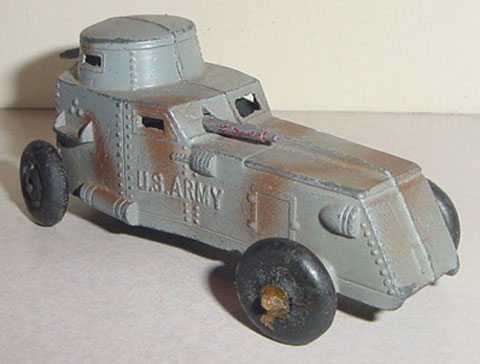
I don't know whether it was worn off the earlier cars I've seen or they never had it.
By the way, notice that almost all the red paint is worn off the gun barrels; this is typical for these cars.
(All three photos courtesy of Eric St.John.)


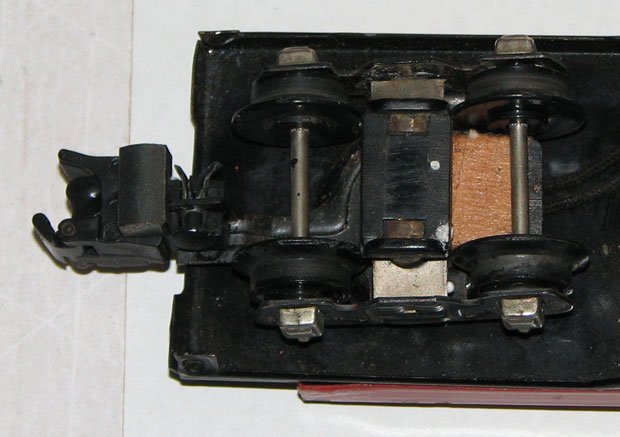
The #710 Automatic Track Section shown below had two inside rails
that provided power to unload the armored car.
This picture also clearly shows what a link coupler car looks like after conversion to knuckle couplers.

and the familiar outside power pickup on the left truck.
(This is a photo I took at the March 2006 Cal Stewart Show, courtesy of John Granucci.)

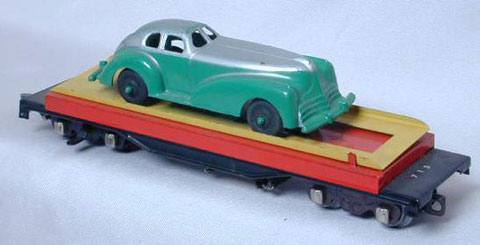
The Manoil coupe came in red, green, or blue.
(Photo courtesy of an anonymous donor.)
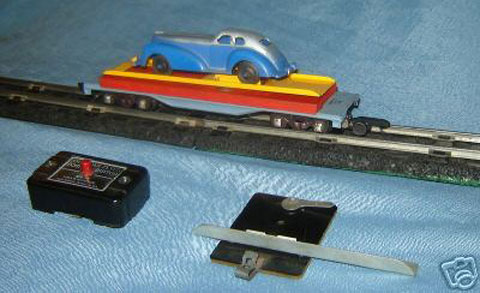

The same car with knuckle couplers was sold as #915 (see below).
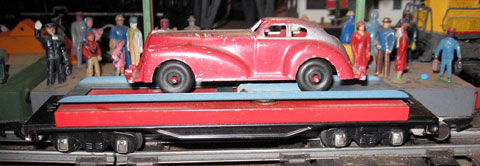
or a Tootsietoy racer (below).
(Photos courtesy of Jack Larson.)
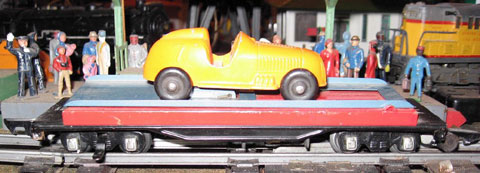
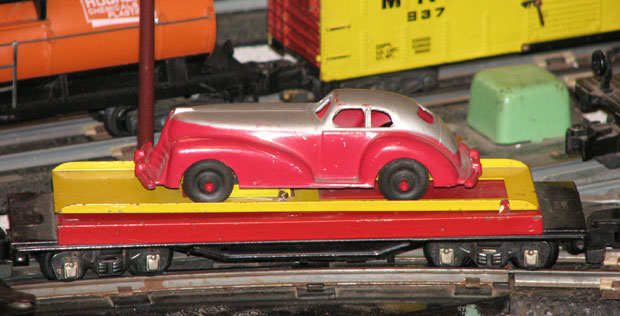
My 1946 car came with a red Manoil coupe which Gilbert didn't sell until 1949,
and my 1946 armored car came with the later outside-pickup car.

(Photo courtesy of an anonymous donor.)
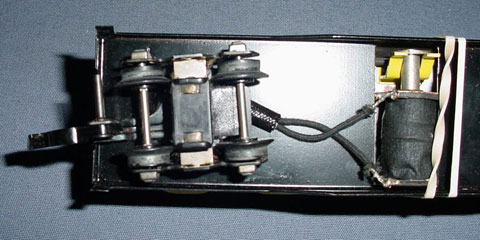
had their power pickup between the wheels.
Later Log Unloading Cars had the familiar outside pickup.
(Photo courtesy of Gary Good.)
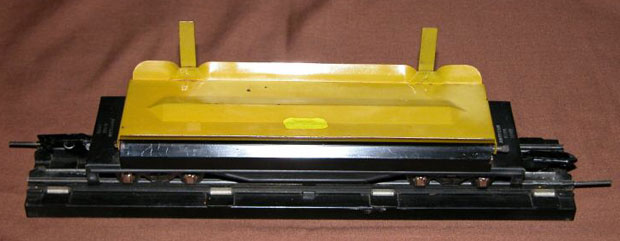
(Photos courtesy of George A. Mostoller.)
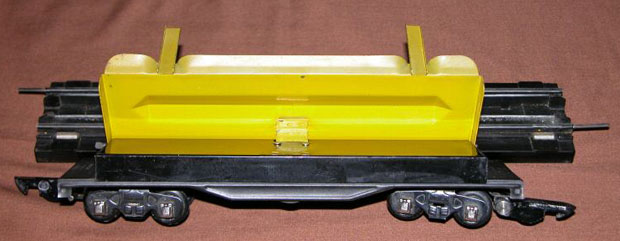

(Photo courtesy of Douglas Weronick.)

Because the third log loaded often bounced off the car, some owners substituted a smaller log..
(Photo courtesy of Douglas Weronick.)

It was also made with a metallic-blue sheet-metal base.

It was also made with a metallic-blue sheet-metal base.
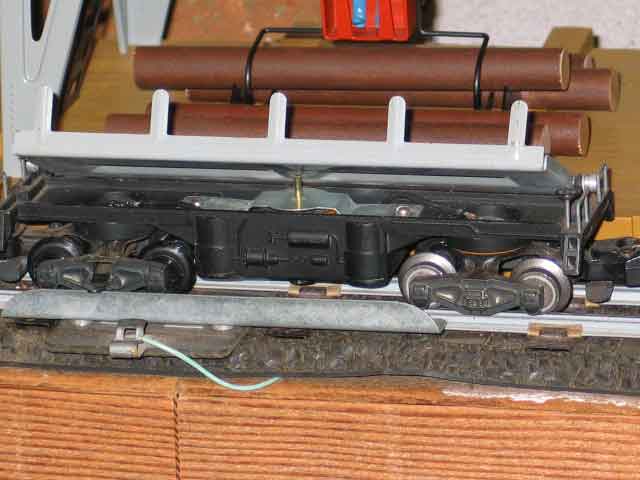
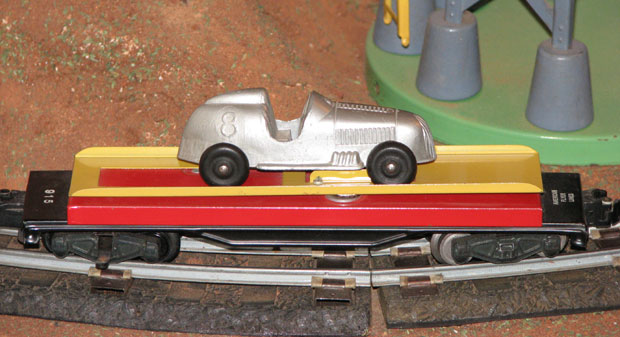
The same car with link couplers was sold as #715 (see above).

(Photo from an ebay auction by Rick Dunn.)
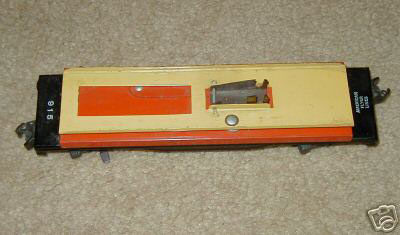
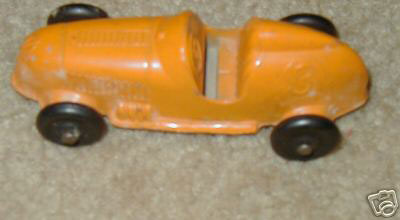
It was offered on ebay in 2005 with this gold one.
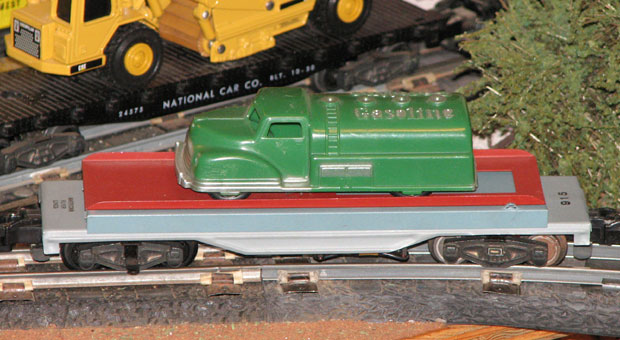
Click the picture to read the Renwal story and see the various truck colors.
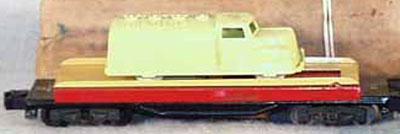
You'll see these every once in a while, but the consensus is that Gilbert never made it that way.
The Renwal trucks were introduced in 1955 with the later gray-base car.


(Photo courtesy of an anonymous donor.)
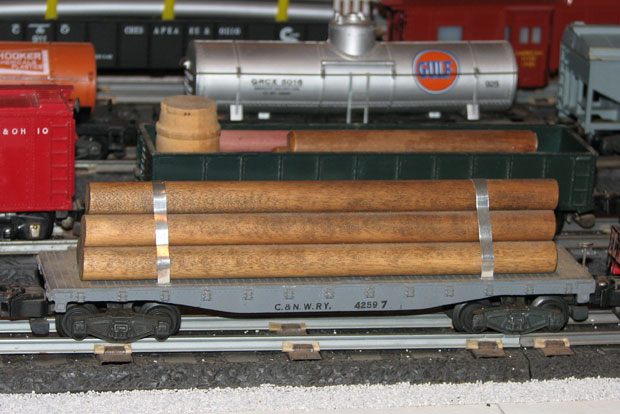
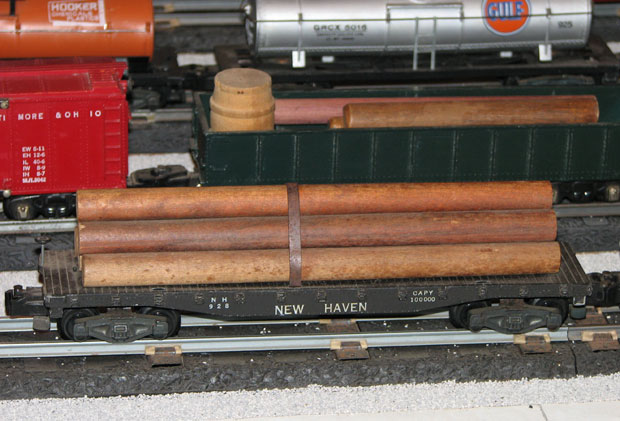
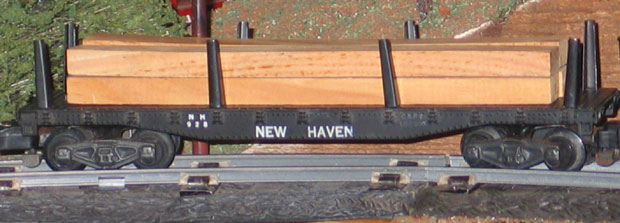

It was also made with a blue-gray base.


Show me the rest of the flatcars.
Over the years, Gilbert made four different kinds of couplers, three of which are common and familiar to most American Flyer owners: link, knuckle, and Pike Master. The fourth, the so-called "solid knuckle coupler," was short-lived and not used on very many cars. Lionel later came up with its own version of knuckle coupler. American Flyer has therefore gone through five generations of couplers. Because there seem to be a lot of people confused by this, I created a page to show the differences. Click the picture below for more detail.

It takes time and money to maintain a website like this. If this site is interesting and helpful to you, please contribute financially to its ongoing success. You may send a contribution via PayPal using theupstairstrain@yahoo.com as the payee. Both credit card and direct transfers would be greatly appreciated. Thank you very much.
If you or your friends have some American Flyer trains and would like them to go to a nice home where they'll be loved and cared for, this is the place! Email me: theupstairstrain@yahoo.com. See my Wish List for the items I need most. Thank you very much.
On the other side of the coin, I post pictures from time to time on my For Sale page of surplus items I have for sale.
The books I am using for reference are listed in the Bibliography page. All the writing and all the pictures on this website are, however, my own, except where cited. No copyrighted materials have been included and all pictures provided by others are used by permission.
Now show me:
The Gilbert Gallery Home Page
Engines
Passenger Cars
Freight Cars
Freight Sets
Work Cars
Accessories
Infrastructure Gallery
Christmas Cars
Boxcars
Refrigerator Cars
Stock Cars
Hopper Cars
Gondolas
Tank Cars
Flatcars
Aquarium Cars
Autorack Cars
Mint Cars
Cabooses
Pictures Needed
Useful Links
For Sale
Wish List
Bibliography
The
Upstairs Train